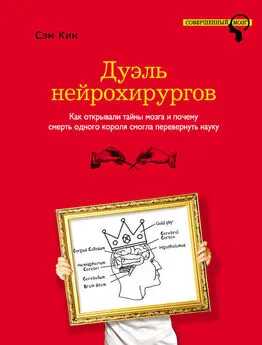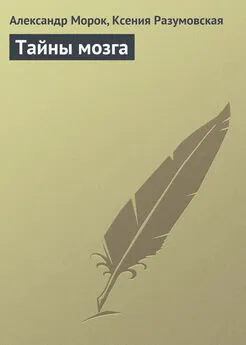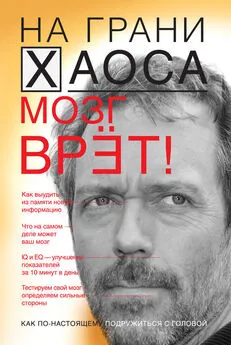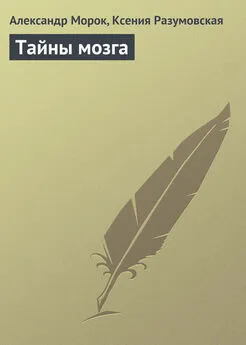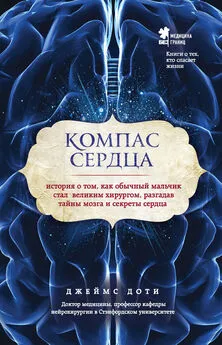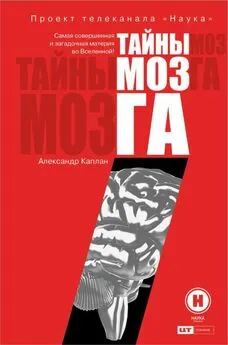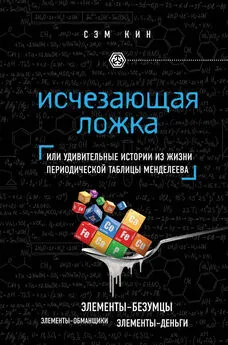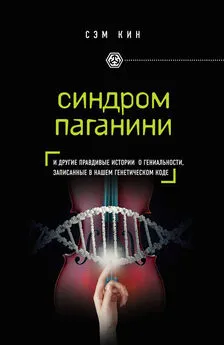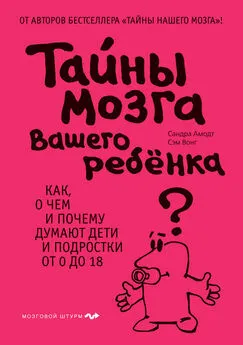Сэм Кин - Дуэль нейрохирургов. Как открывали тайны мозга и почему смерть одного короля смогла перевернуть науку
- Название:Дуэль нейрохирургов. Как открывали тайны мозга и почему смерть одного короля смогла перевернуть науку
- Автор:
- Жанр:
- Издательство:Эксмо
- Год:2015
- Город:Москва
- ISBN:978-5-699-81855-6
- Рейтинг:
- Избранное:Добавить в избранное
-
Отзывы:
-
Ваша оценка:
Сэм Кин - Дуэль нейрохирургов. Как открывали тайны мозга и почему смерть одного короля смогла перевернуть науку краткое содержание
Дуэль нейрохирургов. Как открывали тайны мозга и почему смерть одного короля смогла перевернуть науку - читать онлайн бесплатно полную версию (весь текст целиком)
Интервал:
Закладка:
В этой книге вы видели много историй о травмах и несчастьях. Но в ней есть и примеры необыкновенной стойкости и жизненной силы. Все мы одновременно хрупкие и очень, очень сильные. Даже Финеас Гейдж, эпонимический пример жизни, которая распадается на части, восстановил свои способности в гораздо большей степени, чем могли надеяться ученые.
Ни один мозг не проходит по жизни без сучка без задоринки. Но чудо в том, что наш мозг, невзирая на изменения, во многом остается неповрежденным. Несмотря на все различия между разумами отдельных людей, у нас есть одно общее качество. После инцидента друзья и родные Гейджа клялись, что он перестал быть самим собой. Что ж, он перестал и в то же время не перестал. Как и все мы.
Благодарность автора
Книга, которую вы держите в руках, является плодом работы мозга множества разных людей, и я очень рад, что имел возможность соприкоснуться с их коллективным разумом и собрать результаты. Каждый из них внес что-то важное, и если я пропустил кого-то в этом списке, то остаюсь благодарным, хотя стыжусь своей оплошности.
Самое большое спасибо достается моим любимым людям. Мои родители, Жене и Жан, были рядом со мной буквально всю жизнь и с юмором относились к упоминаниям о них в некоторых моих опусах. (Поэтому я не собираюсь заострять внимание на том, что моя мама фактически провалила тест с рисунком грустного/веселого лица).
Она просто думает наоборот. То же самое относится к моим родственникам Бену и Бекке, двум лучшим людям, которых я знаю. Я рад добавить к этому списку своих маленьких племянников, Пенни и Гаррисона Шульц. Мои друзья в Вашингтоне, Южной Дакоте и по всей стране помогли мне пережить непростые времена, и я рад поделиться с ними хорошими временами.
Мой агент Рик Бродхэд с самого начала полюбил эту идею и помог довести ее до торжественного финала. Я также благодарен моему редактору Джону Парсли, чье поощрение и дальновидность позволили мне проявить мои лучшие качества. Я провел много часов над рукописью, пока не познакомился с Джоном, но он научил меня тому, что я знаю о составлении книги . Бесценную помощь оказали сотрудники издательства, работавшие со мной над этой книгой, и другие люди, включая Мэлин фон Эйлер-Хоган, Кэролайн О’Киф, Моргана Морони, Пеги Фрейденталь, Дебору Джейкобс и Криса Жерома. Я также задолжал кучу благодарностей Уиллу Стехле, который снова придумал потрясающую обложку, и Эндрю Брозине, оказавшему помощь с иллюстрациями к тексту.
И наконец, я выражаю особую благодарность многим и многим мозговитым ученым и историкам, которые внесли свой вклад в отдельные главы и разделы, обогащая рассказ новыми подробностями, помогая мне выслеживать информацию или делясь своим временем, чтобы что-то объяснить. Их слишком много для того, чтобы привести полный список, но будьте уверены, что я не забыл о вашей помощи.
Список цитируемых работ
Общие
1. Albright, Thomas D. , et al. «Neural Science: A century of progress and the mysteries that remain». Cell 100, no. 25 (2000): S1–55.
2. Bergen, Benjamin K. Louder than words: the new science of how the mind makes meaning. New York: Basic Books, 2012.
3. Bor, Daniel. The ravenous brain: how the new science of consciousness explains our insatiable search for meaning. New York: Basic Books, 2012.
4. Doidge, Norman. The brain that changes itself: stories of personal triumph from the frontiers of brain science. New York: Viking, 2007.
5. Feinberg, Todd E. Altered egos: how the brain creates the self. Oxford: Oxford University Press, 2001.
6. Finger, Stanley. Origins of neuroscience: a history of explorations into brain function. New York: Oxford University Press, 1994.
7. Gazzaniga, Michael S., Richard B. Ivry, and G. R. Mangun. Cognitive neuroscience: the biology of the mind. New York: W. W. Norton, 1998.
8. Goldstein, E. Bruce. Sensation and perception. Belmont, Calif.: Wadsworth, 1989.
9. Gross, Charles G. Brain, vision, memory: tales in the history of neuroscience. Cambridge, Mass.: MIT Press, 1998.
10. Gross, Charles G. A hole in the head: more tales in the history of neuroscience. Cambridge, Mass.: MIT Press, 2009.
11. Harris, Sam. Free will. New York: Free Press, 2012.
12. Klein, Stephen B., and B. Michael Thorne. Biological psychology. New York: Worth, 2006.
13. Macmillan, Malcolm. An odd kind of fame: stories of Phineas Gage. Cambridge, Mass.: MIT Press, 2000.
14. Magoun, Horace Winchell , and Louise H. Marshall . American neuroscience in the twentieth century: confluence of the neural, behavioral, and communicative streams. Lisse, Netherlands: A. A. Balkema, 2003.
15. Ramachandran, V. S., and Sandra Blakeslee. Phantoms in the brain: probing the mysteries of the human mind. New York: William Morrow, 1998.
16. Ramachandran, V. S. The telltale brain: a neuroscientist’s quest for what makes us human. New York: W. W. Norton, 2011.
17. Satel, Sally, and Scott O. Lilienfeld. Brainwashed: the seductive appeal of mindless neuroscience. New York: Basic Books, 2013.
18. Stien, Phyllis T., and Joshua C. Kendall. Psychological trauma and the developing brain: neurologically based interventions for troubled children. New York: Haworth Maltreatment and Trauma Press, 2004.
Введение
1. Cheyne, James Allan, and Gordon Pennycook. «Sleep Paralysis Postepisode Distress». Clinical Psychological Science 1, no. 2 (2013): 135–48.
2. D’Agostino, Armando, and Ivan Limosani. «Hypnagogic Hallucinations and Sleep Paralysis». Narcolepsy: a clinical guide. New York: Springer, 2010.
3. Davies, Owen. «The Nightmare Experience, Sleep Paralysis, and Witchcraft Accusations». Folklore 114, no. 2 (2003): 181–203.
4. Santomauro, Julia, and Christopher C. French. «Terror in the Night». The Psychologist 22, no. 8 (2009): 672–75.
Глава 1 Дуэль нейрохирургов у ложа короля
1. Baumgartner, Frederic J. Henry II, king of France 1547–1559. Durham: Duke University Press, 1988.
2. Faria, M. A. «The Death of Henry II of France». Journal of Neurosurgery 77, no. 6 (1992): 964– 69.
3. Frieda, Leonie. Catherine de Medici. New York: Harper Perennial, 2006.
4. Goldstein, Lee E., et al. «Chronic Traumatic Encephalopathy in Blast-Exposed Military Veterans and a Blast Neurotrauma Mouse Model». Science Translational Medicine 4, no. 134 (2012): 134–60.
5. Keeton, Morris. «Andreas Vesalius: His times, his life, his work». Bios 7, no. 2 (1936): 97–109.
6. Martin, Graham. «The Death of Henry II of France: A sporting death and post– mortem». ANZ Journal of Surgery 71, issue 5 (2001): 318–20.
7. Milburn, C. H. «An Address on Military Surgery of the Time of Ambroise Pare and That of the Present Time». British Medical Journal 1, no. 2112 (1901): 1532–35.
8. Miller, Greg. «Blast Injuries Linked to Neurodegeneration in Veterans». Science 336, no. 6083 (2012): 790–91.
9. O’Malley, Charles Donald. Andreas Vesalius of Brussels, 1514–1564. Berkeley,
10. Calif.: University of California Press, 1964.
11. O’Malley, Charles Donald, and J. B. De C. M. Saunders, «The ‘Relation’ of Andreas Vesalius on the Death of Henry II of France». Journal of the History of Medicine and Allied Sciences 3, no. 1 (1948): 197–213.
12. Princess Michael of Kent. The serpent and the moon: two rivals for the love of a Renaissance king. New York: Simon & Schuster, 2004.
13. Rose, F. Clifford. «The History of Head Injuries: An overview». Journal of the History of the Neurosciences 6, no. 2 (1997): 154–80.
14. Simpson, D. «Pare as a Neurosurgeon». The Australian and New Zealand Journal of Surgery 67, no. 8 (1997): 540–46.
15. Strathern, Paul. A brief history of medicine: from Hippocrates to gene therapy. New York: Carroll & Graf, 2005.
16. Vesalius, Andreas, and J. B. de C. M. Saunders. The illustrations from the works of Andreas Vesalius of Brussels. Cleveland, Ohio: World, 1950.
Глава 2 Суп для убийцы
1. Ackerman, Kenneth D. Dark horse: the surprise election and political murder of President James A. Garfield. New York: Carroll & Graf, 2003.
2. De Carlos, Juan A., and Jose Borrell. «A Historical Reflection of the Contributions of Cajal and Golgi to the Foundations of Neuroscience». Brain Research Reviews 55, no. 1 (2007): 8–16.
3. Everett, Marshall. Complete life of William McKinley and story of his assassination. Cleveland, Ohio: N. G. Hamilton, 1901.
4. Finger, Stanley . Minds behind the brain: a history of the pioneers and their discoveries. Oxford: Oxford University Press, 2000.
5. Goldberg, Jeff . Anatomy of a scientific discovery. New York: Bantam Books, 1989.
6. Guiteau, Charles Julius , and C. J. Hayes . A complete history of the trial of Guiteau
7. Аssassin of President Garfield . Philadelphia: Hubbard Bros., 1882.
8. Haines, D. E. «Spitzka and Spitzka on the Brains of the Assassins of the Presidents». Journal of the History of the Neurosciences 4, no. 3/4 (1995): 236–66.
Читать дальшеИнтервал:
Закладка:
